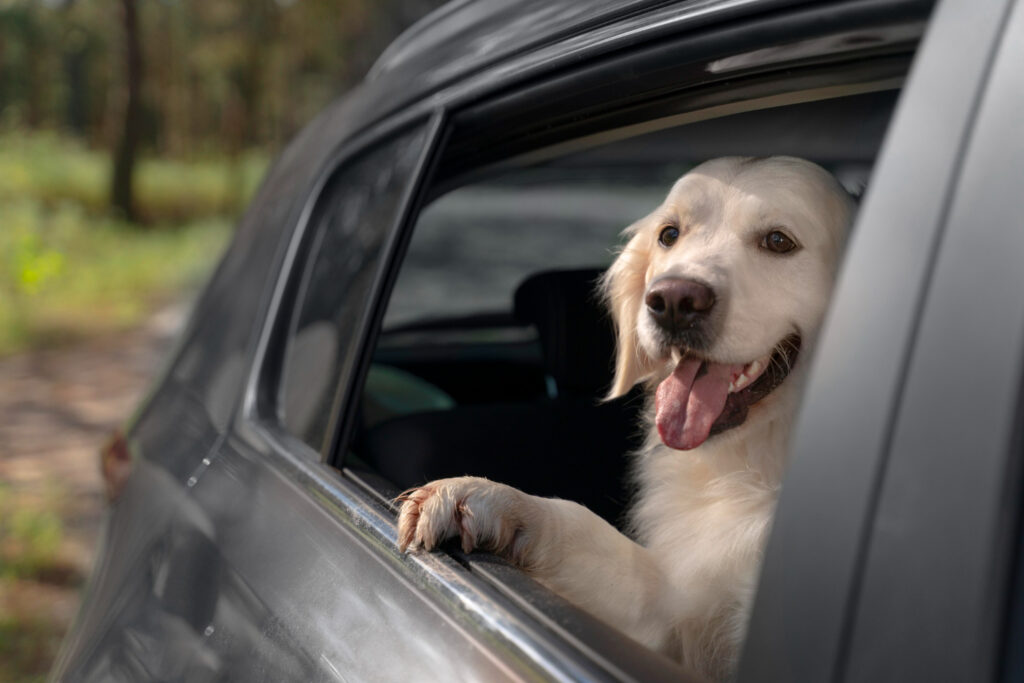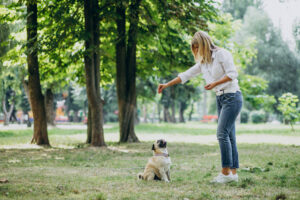Traveling with our canine companions can be a delightful experience. But it’s not uncommon for dogs to pant excessively during car rides. While panting is a normal physiological response for dogs to regulate their body temperature. It can also be triggered by various factors related to car travel.
This article aims to explore the reasons why dogs pant in the car and provides potential solutions to help alleviate their discomfort, ensuring safer. And more enjoyable journeys for both pets and their owners.
Anxiety and Stress:
One of the primary reasons why dogs pant in the car is anxiety or stress associated with travel. Car rides can be overwhelming for some dogs due to unfamiliar sights, sounds, and sensations. Additionally, dogs with a history of negative experiences, such as car accidents or motion sickness, may develop fear or anxiety specifically related to car travel.
Motion Sickness:
Similar to humans, dogs can experience motion sickness, causing them to pant excessively. The combination of motion, changes in body position, and unfamiliar movements can disrupt the dog’s sense of balance, leading to nausea, drooling, and panting.
Heat and Poor Ventilation:
Car interiors can quickly become hot, especially during warmer months or if the vehicle is parked in direct sunlight. Insufficient ventilation or leaving a dog in a parked car can lead to heat buildup, resulting in panting as a dog’s way to cool down. Heatstroke is a severe condition that can occur if a dog is exposed to high temperatures for extended periods, so it is essential to take precautions to prevent overheating.
Restrained or Confined Space:
Some dogs may feel uncomfortable or anxious when confined to a small space, such as a crate or carrier, during car travel. Limited mobility and restricted movement can contribute to stress and trigger excessive panting.
Lack of Familiarity and Training:
Dogs are creatures of habit, and traveling in a car disrupts their usual routines. Lack of familiarity with car rides and insufficient training can make dogs feel insecure and uncertain, leading to panting as a sign of distress.
Keep Reading: What do you call a cold canine>
Solutions to Help Alleviate Panting:
Gradual Desensitization:
To address anxiety and fear associated with car travel, desensitization techniques can be employed. Introduce your dog to the car gradually, starting with short sessions of sitting inside the vehicle while it’s stationary. Reward positive behavior and gradually increase the duration and intensity of the training, providing a comfortable and positive experience for your dog.
Comfortable Restraints:
Using proper restraints like seat belts or car harnesses designed for dogs can help them feel secure and prevent excessive movement. Familiarize your dog with the restraints through positive reinforcement training before embarking on a car journey.

Proper Ventilation and Temperature Control:
Ensure that the car is adequately ventilated by opening windows slightly or using air conditioning. Never leave your dog unattended in a parked car, as temperatures can rise rapidly and cause life-threatening heatstroke.
Medications and Natural Remedies:
For dogs with severe anxiety or motion sickness, consult with a veterinarian who may prescribe suitable medications or recommend natural remedies such as herbal supplements or calming pheromone sprays.
Positive Reinforcement and Comfort:
Associate car rides with positive experiences by providing rewards, treats, and praise. Place familiar and comforting items, such as blankets or toys, in the car to create a sense of security for your dog.
Conclusion:
Understanding the reasons why dogs pant in the car is crucial for addressing their discomfort and ensuring a safe and pleasant travel experience. By implementing the appropriate solutions and taking preventive measures, such as desensitization, proper restraints, ventilation, and positive reinforcement, pet owners can help their dogs overcome anxiety, motion sickness, and other car-related stressors.
Always prioritize your dog’s well-being and consult with a veterinarian for personalized advice and guidance on managing car travel-related issues. With patience and care, car rides can become enjoyable adventures for both you and your furry friend.


